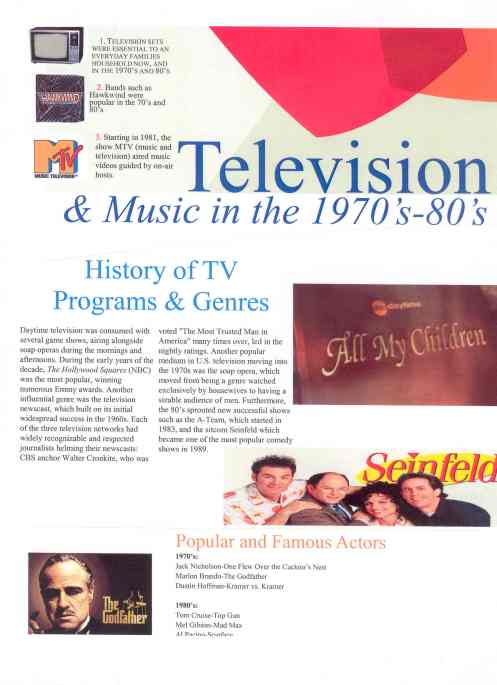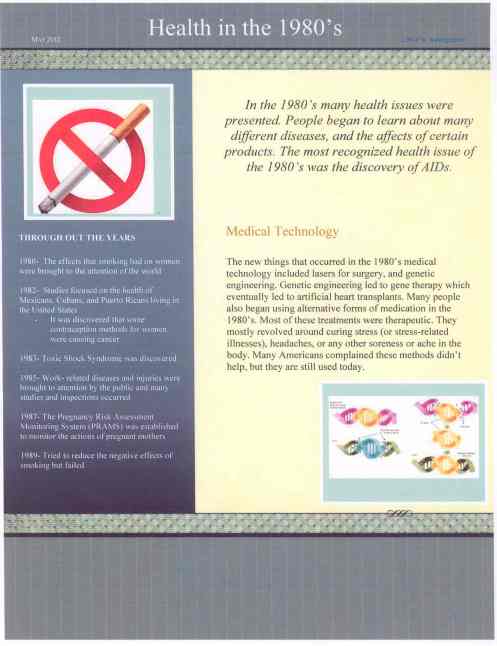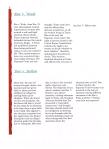How are the drugs getting to the U.S and what are are some types?
In the 1970’s most of the illegal drugs are coming fromColombia specifically theMedellin cartel. They transported the drugs using planes. Panama is also shipping cocaine into theU.S. Now in 2012 most of the drugs are still coming from the south of the boarder, mostly inMexico, except they found new ways of sneaking them over. The smugglers use tunnels, cars, planes, and any way they can they can think of to get the drugs across.
Types–Cocaine – Amphetamines-Marijuana -PCP – Steroids-Heroin– Ecstasy– Hallucinogens-
What is the White House doing about it?
|
President Richard Nixon officially declared a “war on drugs” in 1971, two years after calling for the creation of a national drug policy. |
In June 1971 Richard Nixon declared “war on drugs” stating that it is “public enemy No. 1.” By 1973 he created Drug Enforcement Administration (DEA) to coordinate the efforts of all other agencies in stopping drug use.
Carter campaigns for president on a platform that includes decriminalizing marijuana and ending federal criminal penalties for possession of up to 1 ounce of the drug.
Nancy Reagan-
She launches her “Just Say No” anti-drug campaign.
George H.W. Bush-
He forms the South Florida Drug Task Force.
Barack Obama-
He released his 2012 National Drug Control Strategy, which is a new way of stopping smuggling aroundMexicoand putting money into enforcement.
This graph displays the efforts the U.S is trying to do about drug use. As you can see through 1973-2012 some progress has been done but not enough.
|
Yes, legal |
No, illegal |
No opinion |
|
|
% |
% |
% |
|
| 2011 Oct 6-9 |
50 |
46 |
3 |
| 2010 Oct 7-10 ^ |
46 |
50 |
4 |
| 2009 Oct 1-4 ^ |
44 |
54 |
2 |
| 2005 Oct 13-16 ^ |
36 |
60 |
4 |
| 2003 Nov 10-12 ^ |
34 |
64 |
2 |
| 2001 Aug 3-5 |
34 |
62 |
4 |
| 2000 Aug 29-Sep 5 ^ |
31 |
64 |
5 |
| 1995 Aug 28-30 |
25 |
73 |
2 |
| 1985 May 17-20 |
23 |
73 |
4 |
| 1980 Jun 27-30 |
25 |
70 |
5 |
| 1979 May 18-21 |
25 |
70 |
5 |
| 1977 Apr 1-4 |
28 |
66 |
6 |
| 1973 Jan 26-29 |
16 |
78 |
6 |
| 1972 Mar 3-5 |
15 |
81 |
4 |
| 1969 Oct 2-7 |
12 |
84 |
4 |
| ^Asked of a half sampleThis survey shows that in 1969 not too many people wanted marijuana to be legalized, but in 2011 it is more split. The use of marijuana is now more supported then it was in the past.
Sources http://www.gallup.com/poll/1657/Illegal-Drugs.aspx http://www.npr.org/templates/story/story.php?storyId=9252490 |
|||
Women And Their Effect On Society:
The way that women changed the political, corporate, and family life world since that 1970’s and 1980’s has shaped our views and treatment of women in these aspects today. Up until these revolutionary times, women weren’t fairly treated in in the corporate and business world. Due to their obligations of bearing children and taking care of their homes, they were unable to obtain a fair shot at a successful career. When the 1970’s approached, a wave of motivation rose upon women. Thousands of protests and peaceful marches occurred to equal the rights of women.
The Difference:
The difference between men and women was huge during the 1970’s and ‘80’s. There was a lot of discrimination between gender and they were held back on a belief where women should be at home while men would and work. There were many things stopping women from being successful during these eras like the term glass ceiling refers to “the unseen, yet unbreakable barrier that keeps minorities and women from rising to the upper rungs of the corporate ladder, regardless of their qualifications or achievements. The glass ceiling metaphor has often been used to describe invisible barriers (“glass”) through which women can see elite positions but cannot reach them (“ceiling”). These barriers prevent large numbers of women and ethnic minorities from obtaining and securing the most powerful, prestigious, and highest-grossing jobs in the workforce. Moreover, this barrier can make many women feel as they are not worthy enough to have these high-ranking positions, but also they feel as if their bosses do not take them seriously or actually see them as potential candidates. Women were as capable as men to do the same job and this was proven throughout time. The Equal Rights Amendment, first proposed in 1923 to affirm that women and men have equal rights under the law, is still not part of the U.S. Constitution. The ERA was passed out of Congress in 1972 and has been ratified by 35 of the necessary 38 states. When three more states vote yes, it is possible that the ERA could become the 28th Amendment. The ERA could also be ratified by restarting the traditional process of passage by a two-thirds majority in the Senate and the House of Representatives, followed by ratification by legislatures in three-quarters (38) of the 50 states.
Unfairness At Its Best:
Women were long considered naturally weaker than men, squeamish, and unable to perform work requiring muscular or intellectual development. In most preindustrial societies, for example, domestic chores were relegated to women, leaving “heavier” labor such as hunting and plowing to men. This ignored the fact that caring for children and doing such tasks as milking cows and washing clothes also required heavy, sustained labor. But physiological tests now suggest that women have a greater tolerance for pain, and statistics reveal that women live longer and are more resistant to many diseases. Many men were not okay with females working they saw this as wrong because they were the ones who were supposed to work while women stayed home cooking and with the kids. Maternity, the natural biological role of women, has traditionally been regarded as their major social role as well. The resulting stereotype that “a woman’s place is in the home” has largely determined the ways in which women have expressed themselves. Today, contraception and, in some areas, legalized abortion have given women greater control over the number of children they will bear. Although these developments have freed women for roles other than motherhood, the cultural pressure for women to become wives and mothers still prevents many talented women from finishing college or pursuing careers. Women still produced and looked after the babies, had the worst jobs and lowest pay, did the cooking, made the morning tea and serviced the revolution. The broadsheet referred to all the polishing, sweeping and other work performed by women for no wages and argued that women should have access to all paid occupations without having to carry a double burden of paid and unpaid labor. Despite the Equal Pay Act of 1963, women in 1970 were paid about 45 percent less than men for the same jobs; in 1988, about 32 percent less. Professional women did not get the important assignments and promotions given to their male colleagues, women were performing the same or similar work to men but no advance had been made in the traditional areas where the majority of women worked.
A Little More To The Revolution:
Slowly this has changed, revolution happened. Throughout history women have become aware of the strains being put on them and begun to fight it. Women did not like being stepped on, no one would, they began to make protests to defend themselves, organize groups to support each other and anything to do to raise awareness to this subject. The first of the large IWD marches took place in 1972. From then on, IWD marches generally took place on the Saturday morning nearest to March 8. The name March is really a misnomer for mostly they were more like a walk through the streets with a party atmosphere. The march was organised by an ad hoc open-ended group of women’s liberationists who formed the March Action Campaign for IWD. They issued a sticker, a badge, a broadsheet, other smaller leaflets and a poster inspired by the image of Angela Davis, a Black revolutionary in the United States who had been in prison facing a possible death sentence, but was later released after an extensive international campaign. It wasn’t all male dominance though, we have some very successful people from many years before and after for example Coco Chanel (1883-1971) Innovative fashion designer was instrumental in defining feminine style and dress during the 20th century; Helena Rubersein (1870-1965) Helena Rubins founded one of the worlds first cosmetic companies with all her wealth she was able to support charitable enterprises; Oprah Winfrey (1954- present) an American media proprietor, talk show host, actress, producer, and philanthropist. Winfrey is best known for her self-titled, multi-award-winning talk show, which has become the highest-rated program of its kind in history and was nationally syndicated from 1986 to 2011; Hillary Diane Rodham Clinton (1947-Present) The 67th United States Secretary of State, serving in the administration of President Barack Obama. She was a United States Senator for New York from 2001 to 2009. As the wife of the 42nd President of the United States, Bill Clinton, she was the First Lady of the United States from 1993 to 2001. In the 2008 election, Clinton was a leading candidate for the Democratic presidential nomination.
Women And Their Effect On Society:
The way that women changed the political, corporate, and family life world since that 1970’s and 1980’s has shaped our views and treatment of women in these aspects today. Up until these revolutionary times, women weren’t fairly treated in in the corporate and business world. Due to their obligations of bearing children and taking care of their homes, they were unable to obtain a fair shot at a successful career. When the 1970’s approached, a wave of motivation rose upon women. Thousands of protests and peaceful marches occurred to equal the rights of women.
The Difference:
The difference between men and women was huge during the 1970’s and ‘80’s. There was a lot of discrimination between gender and they were held back on a belief where women should be at home while men would and work. There were many things stopping women from being successful during these eras like the term glass ceiling refers to “the unseen, yet unbreakable barrier that keeps minorities and women from rising to the upper rungs of the corporate ladder, regardless of their qualifications or achievements. The glass ceiling metaphor has often been used to describe invisible barriers (“glass”) through which women can see elite positions but cannot reach them (“ceiling”). These barriers prevent large numbers of women and ethnic minorities from obtaining and securing the most powerful, prestigious, and highest-grossing jobs in the workforce. Moreover, this barrier can make many women feel as they are not worthy enough to have these high-ranking positions, but also they feel as if their bosses do not take them seriously or actually see them as potential candidates. Women were as capable as men to do the same job and this was proven throughout time. The Equal Rights Amendment, first proposed in 1923 to affirm that women and men have equal rights under the law, is still not part of the U.S. Constitution. The ERA was passed out of Congress in 1972 and has been ratified by 35 of the necessary 38 states. When three more states vote yes, it is possible that the ERA could become the 28th Amendment. The ERA could also be ratified by restarting the traditional process of passage by a two-thirds majority in the Senate and the House of Representatives, followed by ratification by legislatures in three-quarters (38) of the 50 states.
Unfairness At Its Best:
Women were long considered naturally weaker than men, squeamish, and unable to perform work requiring muscular or intellectual development. In most preindustrial societies, for example, domestic chores were relegated to women, leaving “heavier” labor such as hunting and plowing to men. This ignored the fact that caring for children and doing such tasks as milking cows and washing clothes also required heavy, sustained labor. But physiological tests now suggest that women have a greater tolerance for pain, and statistics reveal that women live longer and are more resistant to many diseases. Many men were not okay with females working they saw this as wrong because they were the ones who were supposed to work while women stayed home cooking and with the kids. Maternity, the natural biological role of women, has traditionally been regarded as their major social role as well. The resulting stereotype that “a woman’s place is in the home” has largely determined the ways in which women have expressed themselves. Today, contraception and, in some areas, legalized abortion have given women greater control over the number of children they will bear. Although these developments have freed women for roles other than motherhood, the cultural pressure for women to become wives and mothers still prevents many talented women from finishing college or pursuing careers. Women still produced and looked after the babies, had the worst jobs and lowest pay, did the cooking, made the morning tea and serviced the revolution. The broadsheet referred to all the polishing, sweeping and other work performed by women for no wages and argued that women should have access to all paid occupations without having to carry a double burden of paid and unpaid labor. Despite the Equal Pay Act of 1963, women in 1970 were paid about 45 percent less than men for the same jobs; in 1988, about 32 percent less. Professional women did not get the important assignments and promotions given to their male colleagues, women were performing the same or similar work to men but no advance had been made in the traditional areas where the majority of women worked.
A Little More To The Revolution:
Slowly this has changed, revolution happened. Throughout history women have become aware of the strains being put on them and begun to fight it. Women did not like being stepped on, no one would, they began to make protests to defend themselves, organize groups to support each other and anything to do to raise awareness to this subject. The first of the large IWD marches took place in 1972. From then on, IWD marches generally took place on the Saturday morning nearest to March 8. The name March is really a misnomer for mostly they were more like a walk through the streets with a party atmosphere. The march was organised by an ad hoc open-ended group of women’s liberationists who formed the March Action Campaign for IWD. They issued a sticker, a badge, a broadsheet, other smaller leaflets and a poster inspired by the image of Angela Davis, a Black revolutionary in the United States who had been in prison facing a possible death sentence, but was later released after an extensive international campaign. It wasn’t all male dominance though, we have some very successful people from many years before and after for example Coco Chanel (1883-1971) Innovative fashion designer was instrumental in defining feminine style and dress during the 20th century; Helena Rubersein (1870-1965) Helena Rubins founded one of the worlds first cosmetic companies with all her wealth she was able to support charitable enterprises; Oprah Winfrey (1954- present) an American media proprietor, talk show host, actress, producer, and philanthropist. Winfrey is best known for her self-titled, multi-award-winning talk show, which has become the highest-rated program of its kind in history and was nationally syndicated from 1986 to 2011; Hillary Diane Rodham Clinton (1947-Present) The 67th United States Secretary of State, serving in the administration of President Barack Obama. She was a United States Senator for New York from 2001 to 2009. As the wife of the 42nd President of the United States, Bill Clinton, she was the First Lady of the United States from 1993 to 2001. In the 2008 election, Clinton was a leading candidate for the Democratic presidential nomination.
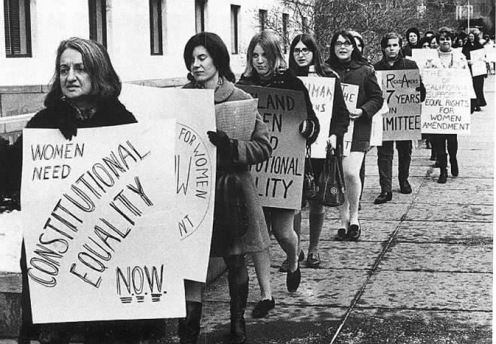
Women in their strike




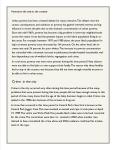
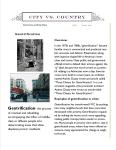






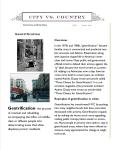

![Environmental_issues[1]](https://thewoottonpost.files.wordpress.com/2012/05/environmental_issues12.jpg?w=497&h=643)
![Environmental_issues[2]](https://thewoottonpost.files.wordpress.com/2012/05/environmental_issues21.jpg?w=497&h=643)
![Environmental_issues[3]](https://thewoottonpost.files.wordpress.com/2012/05/environmental_issues32.jpg?w=497&h=643)
![Environmental_issues[4]](https://thewoottonpost.files.wordpress.com/2012/05/environmental_issues42.jpg?w=497&h=643)
